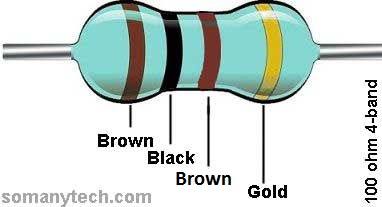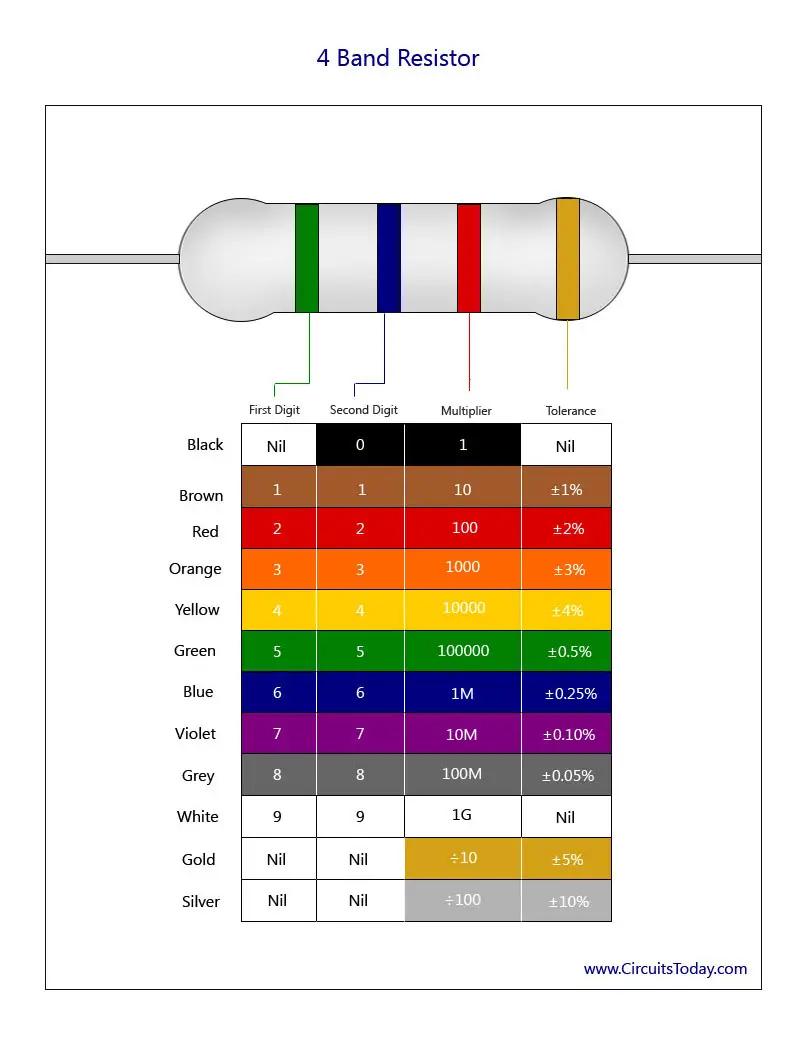

On top of the chart, we can see a picture of a normal four-band general purpose resistor and a five-band precision resistor. For example, the color orange represents the number 3 and a multiplier of 1000, which has 3 zeros. Notice that the number of zeroes is equal to the color’s number. The fourth assigns a multiplier to each color. The third column assigns a number to each color. There are other mnemonics for this which we’ll touch on later. The left column of the chart starts with a helpful mnemonic for remembering the colors and their order.
#Ohm resistor color code code
Referring to this diagram as you read will make understanding resistor color code a breeze. Though it’s unlikely you’ll be working with resistors in the gigaohm range very often, they do exist. I had to edit the figure because for some reason they did not include the multiplier value for grey and white.

We’ll talk a bit more about why in a minute.īut first, let’s have a look at the helpful chart below, which came from a text book of mine. In the figure below, we see that the brown band on the left is the one closest to one end of the resistor and therefore the one we start with when determining its value.įigure 1: the brown band is the one we start with because it is closer to one end of the resistorĪlthough resistors with four bands (like the one in the picture above) are the most common you’re likely to run into as a hobbyist, there are resistors that use a five band and even a six-band color code. The first band you start with when reading resistor color code will be closer to one end of the resistor. Resistor manufacturers adopted this color code. Now on to color code… Intro to Resistor Color CodeĪs the electronics industry evolved, one of the first things that the industry’s players did was standardize the color code marking on resistors. There, resistor color code was one of the first things we learned.īy the way, if you want to know more about resistors, here is a post about resistor types and their differences. Previous to college and my EE degree, I earned a diploma in electronics, computers, and robotic technology at a for-profit tech school.

Nor do I recall any of the texts mentioning it. Oddly enough, none of the courses I had to take to get my degree in electrical engineering talked about this. Use these to check yourself in the beginning.īut it would be a lot more efficient and quicker if you could know the value of a resistor within a second or two just by looking at it. Right, there are some helpful resistor color code calculators out there that can help you when you’re learning. Now, I know some of you may be thinking something like “…yeah, but there are resistor color code calculators online so why bother?” If you’re just starting in electronics you don’t want to miss this one as it will discuss one of the most basic yet important things you need to know. This post is going to be another short one that covers some basics but may also be a good review for electronics veterans alike.


 0 kommentar(er)
0 kommentar(er)
